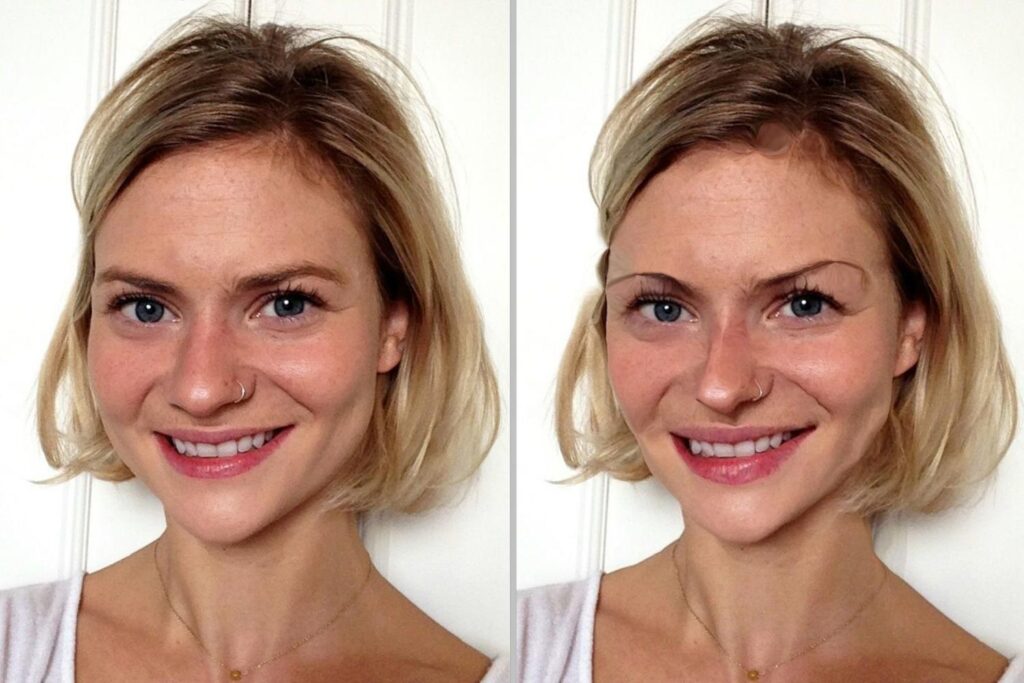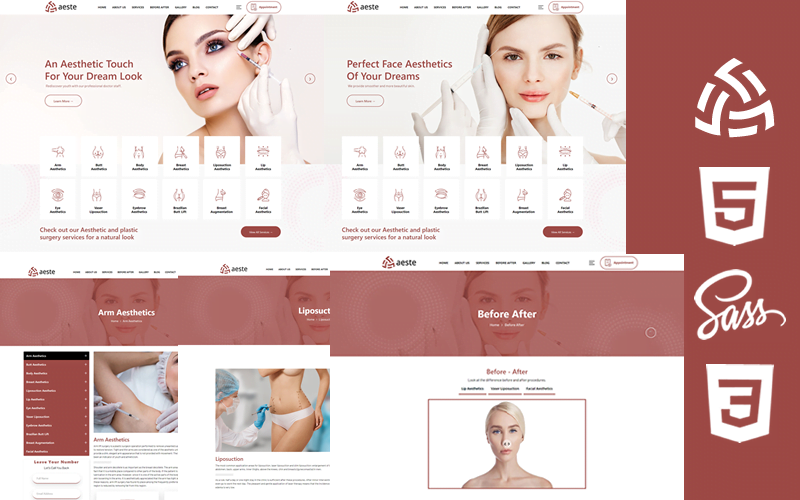Imagine having the power to design your dream look, to enhance your natural features and achieve the confidence you’ve always desired. With the incredible advancements in plastic surgery, this dream can now become a reality. From sculpting the perfect nose to obtaining a sculpted body, the possibilities are endless. Plastic surgery allows you to take control of your appearance, and with the right surgeon, turn your vision into a stunning reality. So why wait? It’s time to embark on your journey towards your dream look through the art of plastic surgery.

This image is property of www.thetimes.co.uk.
Choosing the Right Surgeon
When it comes to plastic surgery, one of the most important decisions you will make is choosing the right surgeon. Your surgeon will play a vital role in helping you achieve your desired look and ensuring a safe and successful procedure. To select the right surgeon, it is essential to thoroughly research their credentials and experience. Look for a surgeon who is board-certified and has extensive training in the specific procedure you are interested in. Additionally, consider their years of experience and their track record of successful surgeries. This will give you confidence in their abilities and increase the likelihood of achieving your desired results.
Another important aspect of choosing a surgeon is reading patient reviews and testimonials. Hearing about other people’s experiences can provide valuable insights into the surgeon’s quality of care and patient satisfaction. Look for reviews that highlight the surgeon’s professionalism, expertise, and ability to meet patients’ expectations. Pay attention to any negative reviews or complaints and consider them along with positive feedback. Remember that no surgeon is perfect, but an overwhelming number of positive reviews can be a good sign of a reputable and skilled professional.
Consulting with multiple surgeons is also key to making an informed decision. By meeting with different surgeons, you can compare their approach, communication style, and recommendations. This will not only give you a better understanding of the procedure but also a sense of their compatibility with you. A good surgeon should be attentive, patient, and willing to answer all your questions. This consultation process will help you determine who you feel the most comfortable and confident entrusting your transformation to.
Understanding the Risks and Benefits
Before undergoing any plastic surgery procedure, it is crucial to have a thorough understanding of the risks and benefits involved. While plastic surgery can offer life-changing results, it is important to be aware that all procedures carry some level of risk. To ensure your safety and satisfaction, discussing potential complications with your surgeon is essential. They will explain the specific risks associated with the procedure you are considering and outline the steps they take to minimize those risks. This knowledge will help you make an informed decision about whether or not the benefits outweigh the potential risks.
Considering the long-term effects of plastic surgery is also important. While you may be focused on achieving immediate results, it is crucial to think about how your desired look will age over time. Talk to your surgeon about realistic expectations for the longevity of the procedure and any potential maintenance or touch-ups that may be necessary down the road. Understanding and accepting the long-term effects will help you make an informed decision and be prepared for the future.
Weighing the pros and cons of plastic surgery is a crucial step in the decision-making process. While the benefits may be enticing, it is important to consider the potential drawbacks as well. Think about the financial investment, the recovery process, and the impact on your daily life. Evaluate the positive aspects against any potential negative consequences to determine whether the procedure aligns with your overall goals and priorities.

This image is property of www.oceanplasticsurgerynj.com.
Setting Realistic Expectations
Setting realistic expectations is essential in ensuring a positive plastic surgery experience. Understanding what can and cannot be achieved is crucial for both you and your surgeon. While plastic surgery can enhance your appearance, it is not a magical solution that can completely change who you are. By discussing your desired outcome and concerns with your surgeon, they can provide professional insight into what is achievable and offer alternatives if necessary.
It is important to have open and honest conversations with your surgeon about the limitations of the procedure. They will give you a realistic understanding of what can be accomplished based on your unique anatomy and medical history. This will prevent any disappointment or dissatisfaction with the results and allow you to make an informed decision about moving forward with the surgery.
Lastly, it is crucial to understand that surgery is not a cure-all for self-esteem or body image issues. While plastic surgery can improve certain aspects of your appearance, it is essential to address any underlying emotional or psychological issues through therapy or counseling. This holistic approach will ensure that you are making a decision based on realistic expectations and a healthy mindset.
Determining Your Desired Look
Before undergoing any plastic surgery procedure, it is important to clearly identify the specific areas of concern you would like to address. Take the time to reflect on what bothers you about your appearance and what improvements you hope to achieve through surgery. Communicating these concerns with your surgeon will help them develop a customized treatment plan to address your individual needs.
Visualizing your ideal outcome can be a helpful exercise in determining your desired look. Take some time to imagine your appearance after the surgery and how it will make you feel. This visualization process can help you articulate your goals to your surgeon and ensure that you are on the same page.
Drawing inspiration from photos or celebrities can also be a useful tool in conveying the look you desire. Bring in pictures to show your surgeon during your consultation, highlighting specific features or outcomes that you find appealing. However, it is important to remember that everyone’s anatomy is unique, and what may work for one person may not be suitable for another. Your surgeon will consider these factors and provide recommendations that align with your individual features and proportions.

This image is property of s.tmimgcdn.com.
Exploring Different Procedures
Plastic surgery offers a wide range of procedures that can address various areas of your body. By exploring different options, you can find the procedure that best meets your needs and goals. Some common facial procedures include rhinoplasty (nose reshaping), facelifts, and eyelid surgery. These procedures can help enhance your facial features, reduce signs of aging, and improve overall facial harmony.
For those looking to enhance their breasts, procedures like breast augmentation (implants) and breast reduction can provide desired results. Breast augmentation can help increase cup size or restore volume lost due to pregnancy or weight loss, while breast reduction can alleviate discomfort caused by excessively large breasts.
Body contouring procedures such as liposuction and tummy tucks can help shape and sculpt your body. Liposuction removes excess fat deposits, while a tummy tuck tightens the abdominal muscles and removes excess skin, resulting in a flatter and more toned appearance.
Discussing these various procedures with your surgeon will help you determine which one is best suited to achieve your desired look based on your individual goals, anatomy, and lifestyle.
Considering Non-Surgical Options
In addition to surgical procedures, there are also non-surgical options available that can help you improve your appearance without going under the knife. Botox and dermal fillers are popular options for reducing the appearance of wrinkles and fine lines, providing a more youthful and refreshed look. These injectables can be administered in a quick office visit and require little to no downtime.
Chemical peels and skin resurfacing treatments are effective in improving the texture and tone of your skin. They can help reduce the appearance of acne scars, sun damage, and hyperpigmentation, giving you a smoother, more even complexion.
Laser treatments can address a variety of concerns such as unwanted hair, skin discoloration, and even tattoo removal. The advancements in laser technology have made these treatments much more precise and effective, with minimal discomfort and downtime.
Discuss the non-surgical options with your surgeon to determine if these procedures are suitable for your specific needs and goals. They can provide personalized recommendations based on your skin type, desired outcome, and budget.

This image is property of image.cnbcfm.com.
Preparing for Plastic Surgery
Preparing for plastic surgery involves understanding and following the pre-operative instructions provided by your surgeon. These instructions may include guidelines on what to eat or drink before the procedure, any medications to avoid, and when to stop smoking, if applicable. Following these instructions is crucial for your safety and the success of your surgery.
If you are a smoker, it is essential to quit smoking well in advance of the surgery. Smoking can impair the healing process and increase the risk of complications. Additionally, certain medications like blood thinners and aspirin may need to be avoided prior to surgery to minimize the risk of excessive bleeding. Your surgeon will provide a comprehensive list of medications to avoid and provide alternative recommendations if necessary.
Arranging transportation and support for the day of the surgery is also important. You will not be able to drive yourself home after the procedure due to the effects of anesthesia and pain medication. It is recommended to have someone accompany you to provide emotional support and ensure your safety on the day of the surgery.
Recovery and Aftercare
Following your plastic surgery procedure, it is crucial to carefully follow the post-operative instructions provided by your surgeon. These instructions will depend on the specific procedure you underwent and will outline guidelines for managing pain, incision care, and activity restrictions.
Pain and discomfort are common after surgery, but your surgeon will prescribe appropriate pain medication to help manage any discomfort. It is important to take the medication as directed and not exceed the recommended dosage to avoid any complications.
Attending follow-up appointments with your surgeon is crucial for monitoring your progress and ensuring proper healing. These appointments will allow your surgeon to assess your results, remove any sutures or drains if necessary, and address any concerns or questions you may have. Following the recommended schedule of follow-up appointments will ensure the best possible outcome and minimize the risk of complications.

This image is property of s.tmimgcdn.com.
Maintaining Your Results
To maintain the results of your plastic surgery procedure, adopting healthy lifestyle practices is key. This includes maintaining a balanced diet, exercising regularly, and managing stress levels. By taking care of your overall health, you can prolong the longevity of your results and ensure optimal healing.
Protecting your skin from aging is also important in maintaining your appearance. This includes wearing sunscreen daily, avoiding excessive sun exposure, and using skincare products that are suitable for your skin type. Your surgeon may recommend specific skincare products or treatments to help maintain the health and appearance of your skin.
Considering maintenance procedures as needed is also a part of maintaining your results. Some surgical procedures may require touch-ups down the road, while non-surgical treatments may need to be repeated to maintain the desired outcome. Consult with your surgeon to understand the expected lifespan of your results and any potential maintenance procedures that may be necessary.
Understanding the Emotional Impact
Undergoing plastic surgery can have a significant emotional impact, and it is important to be prepared for the emotional journey that may follow. Managing unrealistic expectations is crucial in avoiding disappointment and ensuring a positive experience. While plastic surgery can improve your appearance, it is important to have realistic expectations and understand that it may not solve all your problems or completely change your life.
Feeling post-surgery blues is not uncommon and can be attributed to a variety of factors, including the physical and emotional stress of the procedure, changes in appearance, or unrealistic expectations. It is important to give yourself time to adjust and allow your body to heal both physically and emotionally. Surrounding yourself with a support system of friends and family who can provide reassurance and understanding is beneficial during this time.
If you find yourself struggling emotionally, seeking emotional support is essential. This can include talking to a therapist or counselor who specializes in body image and self-esteem issues. They can help you navigate the emotional challenges that may arise during your plastic surgery journey and provide coping strategies to ensure a positive outcome.
Choosing to undergo plastic surgery is a personal decision that should be fully informed and considered. By following these guidelines and thoroughly researching each step of the process, you can make the best decisions for yourself and achieve your desired look through plastic surgery. Remember, your safety, satisfaction, and emotional well-being should always be at the forefront of your journey towards achieving your dream look.

